El Salvador — Suchitoto
El Salvador, another Central American country that has been off limits to travel for some time. First due to their civil war, which lasted from 1979 to 1992. During that time, Salvadorans fled the country, some ending up forming or joining gangs, primarily in Los Angeles. After the civil war, the US began deporting these gang members back to El Salvador, which was not equipped to deal with these 4,000 criminals. The country was unstable, there was widespread poverty, and the gangs flourished – many young people joined gangs, including by force, or fled the country. It was a very dangerous place to live. In 2019, Nayib Bukele was elected president on a promise to combat the gang violence. Some progress was made, but in March 2022, there was a huge government crackdown on the gangs, with many thousands of people arrested. The policies put in place that March are still in place, despite concerns about violations of civil rights and innocent people getting caught up in the arrests. Bukele is very popular with most people here because they finally feel safe. We also feel completely safe here. People are happy, friendly and eager to help. From the security guard who left his post and walked me to a post office in a small mall when I asked him where it was, to a post office employee at a different post office who shook Peter’s hand after helping him to get a box ready to mail home, to the guy in line behind us today at lunch, proudly (and helpfully in English!) explaining the local dishes on offer for lunch today. It’s pretty great here!
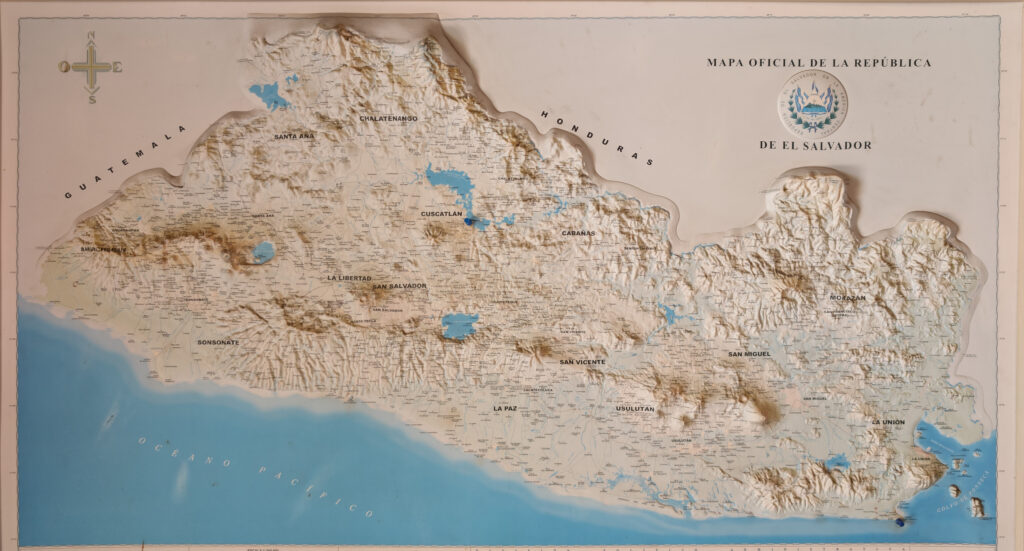
We arrived at our apartment at 2,000 feet above sea level and were greeted by mercifully cooler weather on March 1. We have a nice view of the city surrounded by mountains, but San Salvador itself doesn’t have a lot to offer a tourist other than friendly people and good restaurants and cafes. It is, however, well placed as a home base for exploring the small country. Our first weekend we went to Suchitoto, another picturesque Spanish colonial town on a lake. Seeing a pattern here? Suchitoto is very small, and a weekend was just enough to experience its charms and put it on the list to go back to if we’re here in the future.
I think I found Gringo Tours in our Lonely Planet guidebook. The owner is Robert — a 6’2” white man who grew up in California and moved to El Salvador, his mother’s place of birth, 35 years ago. Everyone in town refers to him as El Gringo. His wife, Tita, is Salvadoran, and less than 5’ tall. They live in Suchitoto and this wonderful couple made our experience here much richer than it would have been as Robert likes for people to experience the country beyond the standard top 10 you can find on nearly every blog online. He organized three activities for us in Suchitoto, the first being a pupusa cooking class just for us that Tita did at their house. Pupusas are El Salvador’s national dish, and they are addictively delicious. We made the dough, we formed the dough around cheese and other ingredients (loroco flower, refried beans, chicharron, local spinach-type green, etc.), flattened them, and grilled them on a flat griddle. I think we could actually make them at home, and we have to try. We made 6 different flavors and stuffed ourselves sick. Robert made me a fabulous mamay-papaya smoothie and broke out some aged local rum for Peter. We had a great time, and even met two of their grand kids who wandered in.
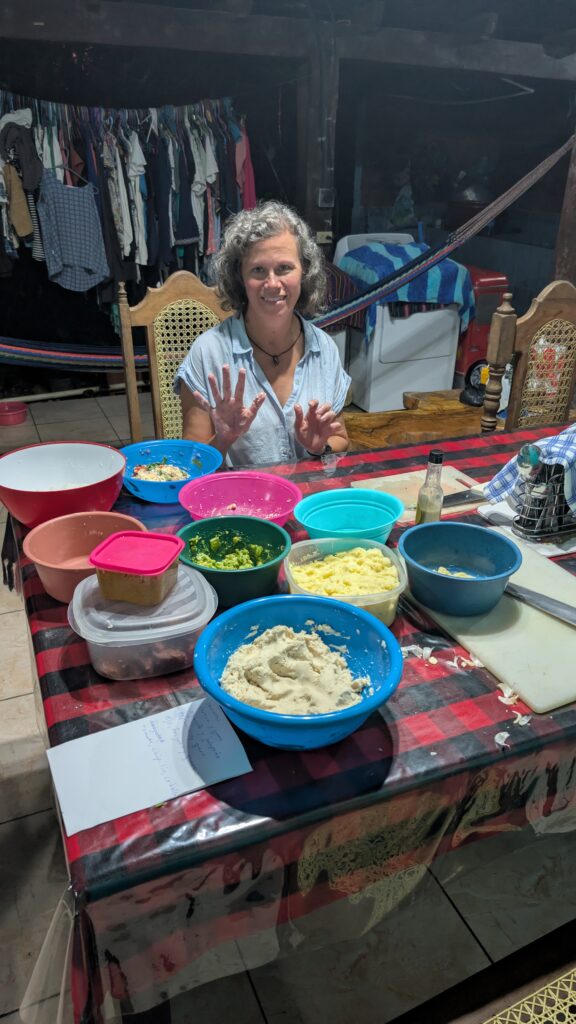
Pupusas are messy to make
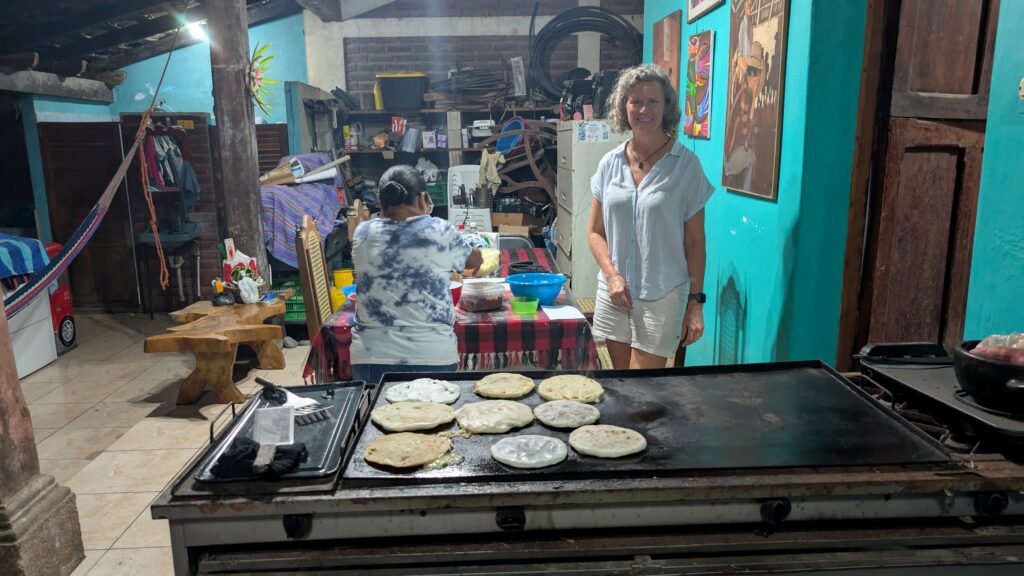
Tita busy making more pupusas
The next day we were to meet a “former combatant” (i.e., a guerilla who fought in the civil war), hear his story, and then go on a hike. We weren’t really sure what to expect and the hike seemed like a weird add-on to a totally different experience, but we were up for it. Oscar, in his early 30s, was our driver and hiking guide. Oscar was born during the civil war in a refugee camp in Honduras. His mother’s first husband was killed in the war, as was her 13-year old son who took his adolescent anger and went to fight after his father was killed. After the war, Oscar’s family came back to the Suchitoto area, only to next live amongst gang members. Oscar was getting increasing pressure to join a gang, so he escaped to Virginia for several years, and moved back recently. It was so interesting to talk to him. Then we met Rafael, the former combatant, at the entrance to a park near Cinquera.
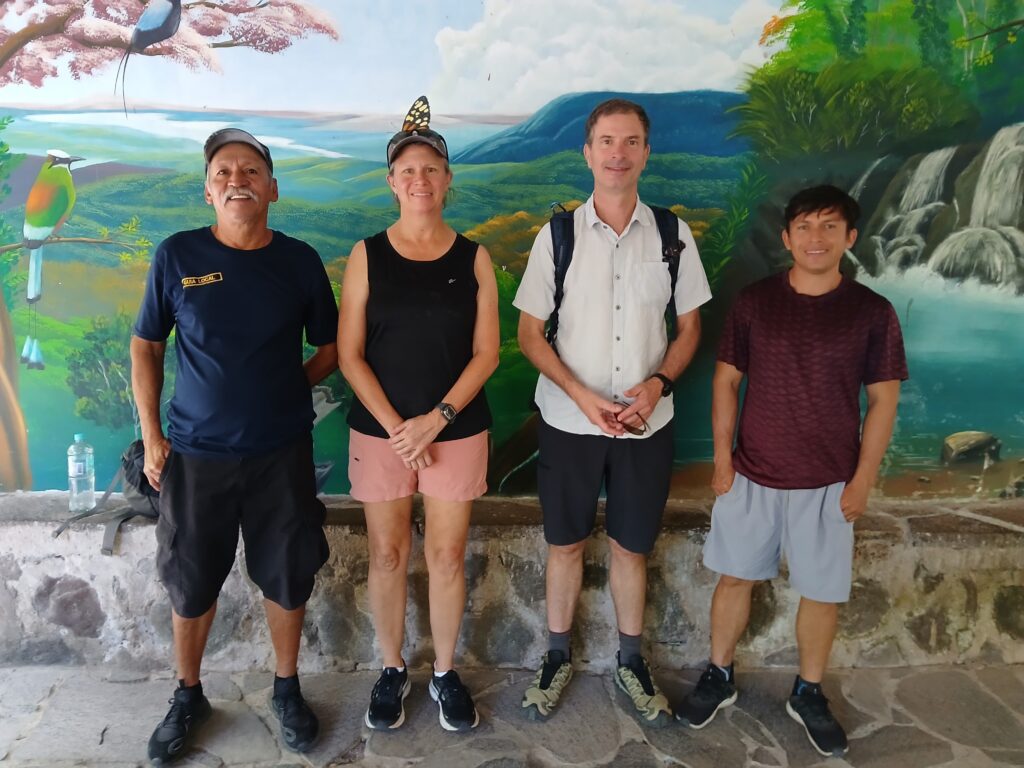
Rafael, me (a perfect example of poor photo composition), Peter, and Oscar
Rafael told us his story for over an hour, from how it was to live there before the war, how the people had had enough of working in near slave-like conditions, banded together and starting fighting back once it was clear the government had no interest in negotiating for better conditions. I can’t do his story justice here but will mention a few things. They got a lot of their weapons indirectly from the US, which was arming the Contras in Nicaragua, who didn’t actually want to fight, so sold their weapons to the El Salvadoran guerilla rebel fighters (the FMLN). Rafael became a leader, he was trained in Cuba on many of the tactics the Vietnamese used in their American war, and he was there when the FMLN took over the military base at night by complete surprise that brought about the end of the war. He also described how they were nearly starving to death early on because any time they would cook food, they would get bombed. This all changed after they learned during training in Cuba how the Vietnamese evaded detection by the Americans, by building ovens into the side of a hill and running the smokestacks several meters under the ground so the smoke dissipated and cooled before it could exit and give away their position. Fascinating to hear this history from someone who was there. After that we went on our hike up and down a mountain, where we realized this wasn’t just a hike, this was an area that saw heavy fighting. On that hike we saw remnants from the war, including a Vietnamese-style oven, a flat area in the forest where medics operated on injured soldiers using Coleman stoves for light, and El Salvador’s tomb of the unknown soldier. Powerful day.
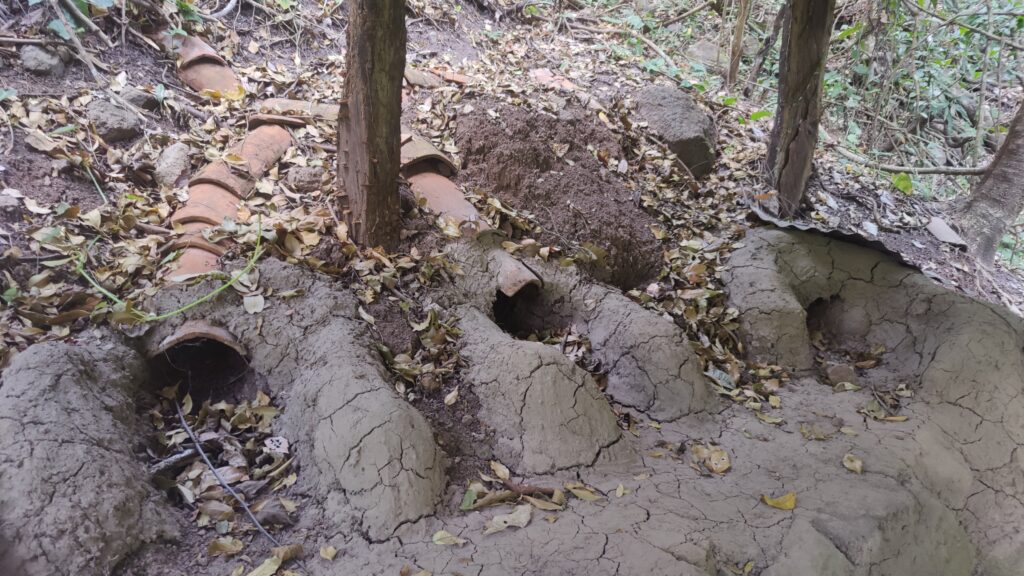
Vietnamese-style oven used in the civil war
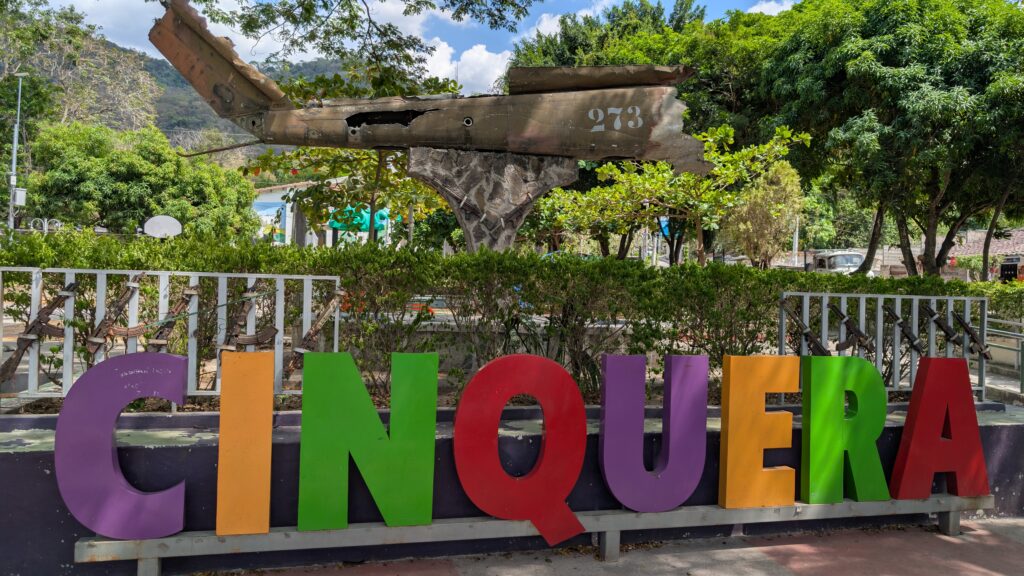
Tail from the last helicopter shot down by the FMLN in this area; note guns on fence too
On our final day in Suchitoto, we took an indigo dyeing class at a women’s cooperative. Indigo used to be El Salvador’s primary export (we also saw an old concrete indigo processing vat from the 1800s on our hike the prior day) until a German scientist invented a synthetic replacement for indigo in the 1880s and basically wiped out the industry. Today, cooperatives and other artisans in the country are working with real indigo dye, and we saw many items for sale all over. The process was interesting, and we had fun – Peter made a t-shirt and I made a scarf, basically tie-dyed but done in a way that doesn’t totally smack of the 60s. I’ll probably end up wearing them both.
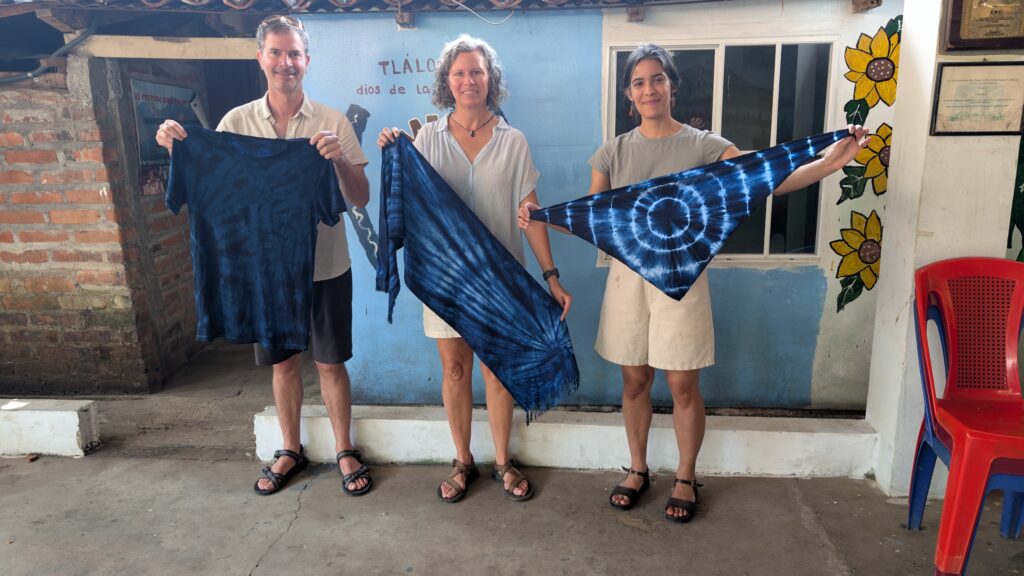
Our indigo-dyed creations
Categories: Uncategorized
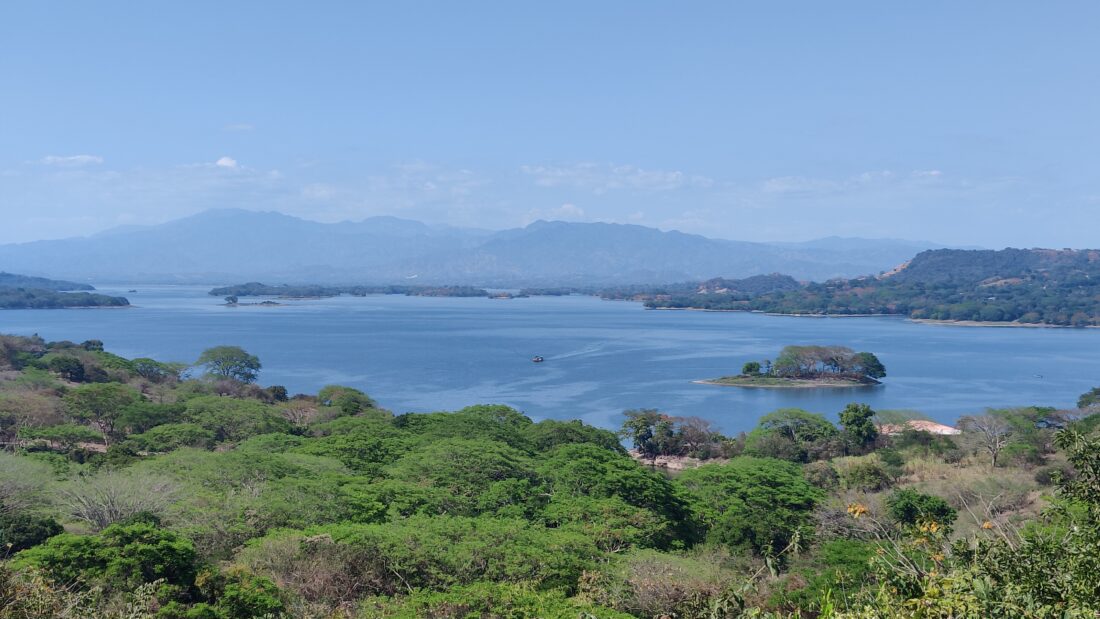
D – This is really interesting. I think one of the best uses of technology is allowing adventures like the one you are on now (as well as past ones). I had to look up sources of indigo dye and found that there are a number of sources, but the main one:
“The primary commercial indigo species in Asia was true indigo (Indigofera tinctoria, also known as I. sumatrana).” Most other sources are plants but there is also a snail that can be a source. The dye is applied to cotton (Levis, etc). Interestingly mushroom dyes bind only to yarn or fabric with animal protein, like wool or silk. Fungal dyes do not bind to cotton. Why all this is true is beyond me, but it’s interesting.
I looked up indigo too, and did not see the snail info – so interesting. They told us indigo only binds to natural fibers, but obviously it doesn’t have the animal protein requirement as you say — I didn’t know that about mushroom dyes!
Thanks for sharing your adventures in El Salvador Suchitoto! You both continue to amaze me with everything you do and experience!! Your making pupusas was very interesting. I actually think I would like them too! I enjoy seeing all the pictures, especially of ones that include both of you! This way I know you are doing ok and surviving!!! Take care…..
Oh Marlys you’d love the pupusas! Making them was fun, but the real joy is in the eating.
Super interesting! Thank you for sharing! We so enjoy reading about your adventures!! All the best to you both!
sara
Your adventures here are very interesting, especially the political info.
Thanks for sharing.
Thank you! We too find the historical political situation down here so interesting.